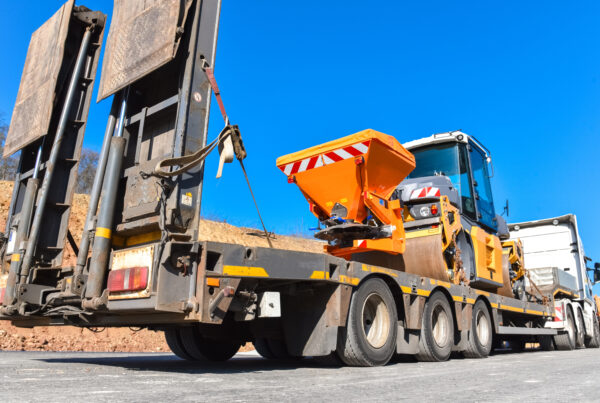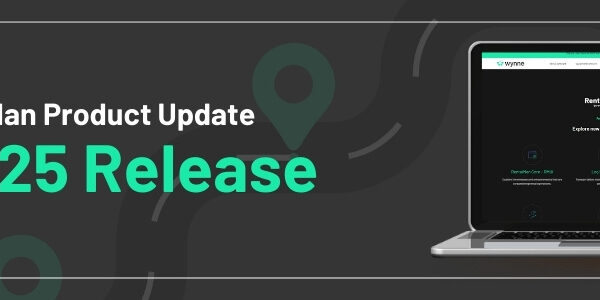
Enterprise construction companies are increasingly looking to extract more value from their fleets. For those with underutilized equipment, external rentals offer a direct path to new revenue, renting owned assets to subcontractors, regional builders, or peer contractors.
Turning internally managed equipment into an external rental offering is a significant operational shift. It requires rethinking how assets are tracked, billed, maintained, and supported while ensuring the systems in place can handle that complexity without disrupting ongoing projects.
What Are External Equipment Rentals?
External rentals involve leasing equipment to third parties outside your organization. This model differs from internal job costing or inter-division transfers. It’s a commercial agreement where your company becomes a rental provider with all the operational, legal, and financial responsibility that comes with it.
The global equipment rental market is projected to exceed $140 billion by 2027, according to a report from Global Market Insights. For companies with large, capital-intensive fleets, participating in that market doesn’t require new assets, it requires a smarter approach to managing the ones you already own.
What Your Operation Needs to Support External Rentals
Transitioning into external rentals adds complexity. Without the right infrastructure, it becomes a drain on resources. With the right system, it becomes a scalable revenue stream.
- Centralized Fleet Visibility
You need a real-time view of your fleet: where each asset is, whether it’s available, what condition it’s in, and what it’s earning. Relying on spreadsheets, yard calls, or team memory invites double-bookings, delays, and missed revenue.
- Structured, Flexible Pricing
External rental pricing is not one-size-fits-all. You need configurable rates by duration (hourly, daily, weekly), by customer, and by asset. You also need clear rules around overtime, fuel charges, damage, and minimum periods. Manual pricing or inconsistent rules lead to margin loss and billing disputes.
- Automated Billing and Invoicing
Internal fleet use might involve cost transfers. External rentals require commercial invoicing. Without automated billing tied to usage and contract terms, teams waste time building invoices manually, and errors go unchecked.
A modern system should:
- Trigger billing based on on-rent/off-rent status
- Apply the correct tax, discounts, and surcharges
- Reconcile delivery and return timing automatically
- Asset-Level ROI Tracking
Not all assets should be made available for external rental. Your system should tell you which equipment performs best, which sits idle, and which loses money. That visibility informs procurement, resale timing, and how aggressively you push certain assets into external rotation.
Insurance and Compliance Requirements
External rentals introduce real liability. Equipment leaves your sites and your direct control. That means documentation and compliance must be bulletproof.
Insurance
You need:
- A valid Certificate of Insurance (COI) from every customer
- Clear, contract-level terms for liability, damage, and theft
- Internal policies on asset value thresholds and replacement processes
MyCOI and similar platforms help automate COI collection and validation, but your rental system must track COIs by customer and flag expirations before an asset goes out.
Compliance
All rentals must meet OSHA, environmental, and safety standards. That means:
- Logging inspections before and after each rental
- Documenting condition photos, service history, and certifications
- Storing this data in a way that’s accessible and tied to each asset
RentalResult manages compliance documentation down to the asset level. This includes safety checks, maintenance logs, certifications, and historical rental data—all accessible in one place. It ensures your team stays ahead of audits and protects the business if incidents occur.
What Fails Without the Right System
When firms attempt to launch external rentals using internal tools or generic systems, these problems follow:
- Assets are unavailable when promised
- Rental agreements are inconsistent
- COIs aren’t tracked or verified
- Maintenance is missed between rentals
- Billing is manual and error-prone
- Finance can’t reconcile rental income with asset usage
- Teams spend hours per rental instead of minutes
It doesn’t scale, and it erodes trust internally and with customers.
Return on Investment: Why This Model Pays Off
Companies that formalize external rentals see:
- 20–40% higher utilization of owned assets
- Faster ROI on capital purchases
- New revenue without expanding project volume
- Lower reliance on third-party rentals
- Clearer insights into what’s worth owning vs. renting out
It also shifts fleet from a cost center to a revenue contributor, a move that matters when budgets tighten and margins are scrutinized.
Getting It Right
If your fleet is large and underutilized, even occasionally, there’s an opportunity in external rentals. But seizing that opportunity requires software that treats rental as a core function, not an afterthought.
External Rentals by RentalResult was built for this exact scenario. It supports both internal equipment management and external rental operations—down to pricing, compliance, scheduling, billing, and analytics. It’s designed for scale, accuracy, and profitability.
Idle equipment ties up capital. Rented strategically, it drives profit, improves asset performance, and positions your operation for long-term growth. The difference lies in having the right system to make it happen—intentionally, efficiently, and at scale.
If you’re exploring how to turn your underutilized fleet into a revenue-generating asset, connect with an equipment expert at RentalResult. We’ll walk you through what it takes to invest in a platform built to support external rentals—and show you how it will pay for itself through increased utilization, efficiency, and returns.




